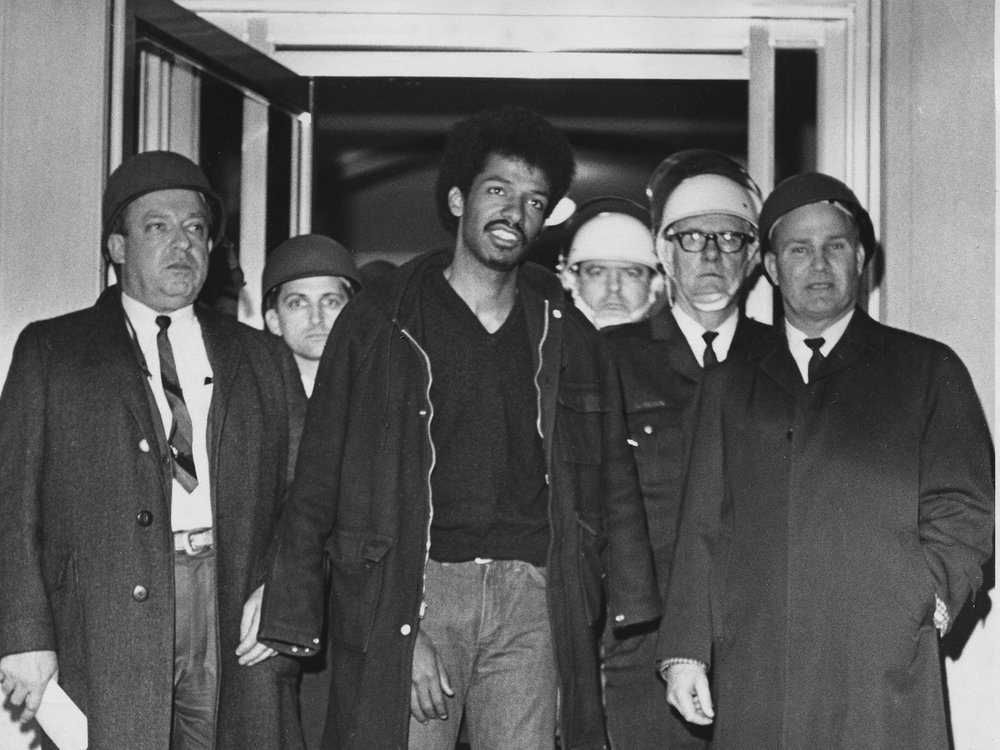Delano Middleton.
Henry Smith.
Samuel Hammond Jr.
These were the names of the three Black victims killed by South Carolina Highway Patrol officers in the February 8, 1968, Orangeburg Massacre at South Carolina State University campus, where they were protesting the segregationist practice of the local All-Star Bowling Lane.
On Feb. 8, South Carolina State University honored the 54th anniversary of the massacre with a new monument that features the busts of the three young victims.
Henry Smith and Samuel Hammond, both 18-years old, were students at the historically Black college, and Delano Middleton was just a 17-year-old high school student who would visit daily to see his mom at the college where she worked. Middleton, who we must remember was just a child, was shot seven times by police. Twenty-eight others were injured, most of whom were shot in the back while running away from the gunfire after nine policemen opened fire with carbines, shotguns, and revolvers at the crowd of approximately 200 young and unarmed protesters.
The bowling alley, which was the only one in Orangeburg, had continued to refuse Black people entry or service, despite the passage of the 1964 Civil Right Act, which made it illegal to discriminate based on race, color, religion, sex or national origin. Harry Floyd, the proprietor of the bowling alley, continued to illegally refuse Black people entry or service. To simply enjoy a night of bowling, a Black person from Orangeburg would have had to make a 100 mile round-trip to Columbia, South Carolina.
The cause for the onslaught on Feb. 8, 1968, had happened only three days prior, on Feb. 5, when a small group of Black students who were conducting a non-violent sit-in protest at the All-Star Bowling Lane were told to leave by Harry Floyd, after which they peacefully left. The next day, the students returned to the bowling alley, and 15 were arrested by police in support of the blatantly illegal discrimination practice of Harry Floyd. As news of the criminal discrimination perpetrated by Floyd and police spread, tension around the issue rose. Democrat South Carolina Governor Robert McNair called in the National Guard, further escalating the situation.
As reported in Smithsonian Magazine, Reid Toth, associate professor of criminal justice at University of South Carolina Upstate, said: “Had this been a protest at Clemson or University of South Carolina [two mostly white schools that had only integrated five years prior], I have no doubt that the governor wouldn’t order in the National Guard. If you had a group of white students marching in the streets in protest of integrating, you wouldn’t have seen the governor sending in the National Guard. It comes down to a terrible part of the history of my home state, which I love, but is still to this day battling the same sense of fear — that Black people are dangerous.”
The Orangeburg massacre preceded the 1970 Kent State Massacre, where four students were killed by police and nine were injured, and the Jackson State killings, where two students were killed by police and 12 injured. It was the first case of deadly violence inflicted on university students by law enforcement in the United States, but despite the historical precedence, the Orangeburg Massacre received little national media attention — both then and now.
Much of the reporting that did occur was filled with misinformation and sometimes even bald-faced lies. For example, The Associated Press reported that there was a “heavy exchange of gunfire,” despite no evidence to support that allegation. Many, including McNair, argued — against the evidence that indicated no student was armed — that the students were the first to shoot. Since the massacre occurred, no formal investigation into the event has been conducted, showing just how low a premium is put on the value of Black lives by the police and the capitalist state.
In 1969, the nine patrolmen who had fired onto the unarmed crowd of young protesters were acquitted of all charges. In an interview on Democracy Now!, Cecil Williams, a civil rights photographer and the local year book photographer for many local students at the time, and who was called in to testify at the trial for the nine killings, informs us that it took no more than 30 minutes to acquit the guilty officers of any crime.

The only person who was convicted of any charges was Cleveland Sellers, who was a Black civil rights activist with the Student Non-Violent Coordinating Committee and was targeted by the state as a result. Sellers served seven months for the bogus charge of “inciting a riot,” and was fully pardoned of all charges 25 years later in 1993. Sellers chose not to have his record expunged, keeping it as a “badge of honor.”
At this year’s anniversary, Cleveland Sellers was present as the keynote speaker at the ceremony at SC State. “All of us benefit today from the courage and sacrifices of the people who made their voices heard that day in 1968,” said the university’s Interim President Alexander Conyers in a press release.
Although left out of the mainstream history books, the Orangeburg massacre remains a reminder of the not-so-distant apartheid past. The newly erected bronze monument serves to keep the memory of these heroic Black freedom fighters alive as a new generation continues the struggle against a system of racist oppression.






